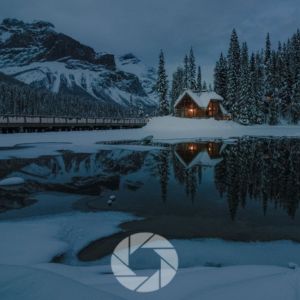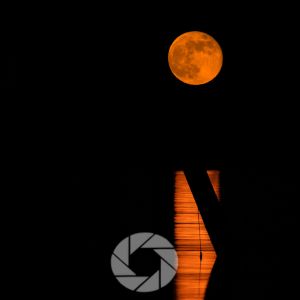
There’s a quiet truth I’ve come to believe, based on the rustle of autumn leaves and the hush of early morning fog settling over a mountain ridge: all landscape photographers are pagans. Maybe not in name, and maybe not even consciously, but in practice? Absolutely.
We wake up at odd hours to chase the first light across a field. We hike through ancient forests, not just to get “the shot,” but to listen; to stand still and be humbled.
We celebrate the seasons with our cameras, marking the solstices and equinoxes not with rituals and fire but with shutter clicks. And whether we realize it or not, we are participating in something far older and deeper than just a hobby. We’re entering into a dialogue with the land.
This post isn’t about converting anyone or making claims about belief systems. It’s about shining a light on the ways our work reflects our deep appreciation for the earth.
All Landscape Photographers Are Pagans (Whether They Know It or Not)
Photography has always been more than technical settings and perfect exposures for me. It’s a form of meditation; a quiet act of paying attention. In that moment behind the lens, I’m not trying to control the scene but to be present with it. I’m listening.
In pagan belief systems, especially those that follow nature-based spiritual paths, there’s a similar emphasis on reflection and communion. .
When we take the time to frame a sunset or stand for hours waiting for the mist to lift from a canyon, we’re honoring something. It’s no different from how ancient people might have paused to give thanks to the spirit of a grove or the rising sun. We photograph the land with intention, with respect, and with awe.
Sacred Spaces and Sacred Light
Some places just feel different, don’t they?
There are trails I’ve walked where the air felt heavier with meaning. There are waterfalls that hum like old songs, canyons that feel like you’ve stepped into something beyond time.
In pagan traditions, these places are often called sacred spaces; natural sites with spiritual power, whether from history, myth, or energy. As landscape photographers, we instinctively seek these places. Not just because they’re beautiful, but because they feel alive.
We don’t need to explain why we feel drawn to a sun-dappled grove or a quiet desert at twilight. We just know. Our job as photographers isn’t just to capture the beauty; it’s to honor the essence of the place. To listen first, and then create from that place of humility.
When we kneel to photograph wildflowers in a hidden meadow, when we pause before entering a moss-covered forest; we are engaging with these landscapes in a deep way.
Living in Rhythm with the Earth: Landscapes and Pagans
The Wheel of the Year (eight seasonal festivals that mark the turning of the Earth) gives structure to many pagan traditions. It honors the solstices, equinoxes, and the spaces in between. But for landscape photographers? We’re already tuned in.
We wait for the light to return after the long darkness of winter. We chase fall’s fire as the leaves turn. We rise early on the summer solstice to watch the sun crest over the hills. We mourn the fading light in late October, intuitively aware that something is shifting.
Maybe you’ve never called it Samhain or Beltane or Litha. Maybe you just call it “peak color” or “that golden morning.” But we mark time with the land. We live in seasonal rhythms. We plan our calendars around where the sun will rise and what the trees will be doing.
The Earth has music for those who listen. – George Santayana
We don’t just notice the seasons; we celebrate them. We plan our shoots around them. We feel them. Even if you’ve never used the word “pagan,” if you align your creative life with the land’s rhythm, you’re participating in a very old pattern.
This alignment with nature’s rhythms is not coincidental. To capture the essence of a landscape, one must first understand and respect its patterns. This deep engagement fosters a relationship that mirrors the pagan ethos: one of humility, gratitude, and awe.
📸Learn for free!
➡️ FREE Wallpapers and Guides
➡️ DISCOUNTS on future Tours & Tutorials
➡️ TIPS for improving Your photography

I don’t share your Info with anyone. You can unsubscribe at anytime.
The Four Elements in Every Frame
Earth. Air. Fire. Water.
The four elements of Nature [Earth, Air (Wind), Fire, and Water] are the fundamental forces that shape both the natural world and human experience. Rooted in ancient philosophy and spiritual traditions, these elements represent different aspects of life, energy, and transformation.
These aren’t just poetic ideas, they’re compositional tools, mood setters, story builders. And they’re core to how pagans understand the world: as a dance of elemental forces.
When we compose a frame that captures the solid stillness of a mountain (earth), the swirling movement of clouds (air), the soft glow of sunrise (fire), or the slow swirl of a river (water), we’re not just capturing beauty. We’re photographing the ancient powers that shaped the world.
Long exposure shots of crashing waves, moody fog winding through pines, embers glowing in a campsite fire. These aren’t just “good light” or “epic weather.” They’re a visual language of the elements. As landscape photographers, we bear witness.
When we include these forces in our compositions, we’re telling a deeper story; one of interconnection and elemental balance. Our work becomes not just visual, but spiritual. It becomes a way of seeing nature. Please take a look at my post on Four Elements Photography that goes into detail about using the elements as compositional tools.
All Landscape Photographers are Pagan: Symbols, Cycles, and Meaning
One of the things I love most about photography is that it’s symbolic by nature. A photo doesn’t just show; it suggests, invites, evokes. It points toward something deeper.
In pagan practice, the land is full of symbols: spirals in a snail shell, the rebirth of spring, the waning of the moon. Landscape photographers tap into this, whether we mean to or not. We know that the bare tree is about more than just winter; it’s about letting go. The sunrise isn’t just light; it’s hope. The changing leaves aren’t just a palette, they’re a reminder that everything is in motion.
Nature is full of symbolism, and so is landscape photography.
- A bare tree isn’t just winter; it’s a symbol of rest and renewal.
- The first green sprout isn’t just spring; it’s hope.
- The crescent moon over a ridge isn’t just light; it’s a portal to something ancient.
In many pagan traditions, these aren’t just metaphors; they’re messages. We don’t need to speak the language perfectly to understand it. We feel it in our gut. We click the shutter when the meaning rises to the surface like mist.
And that’s something no filter or preset can fake.
Our work is richer when we pay attention to symbols, cycles, and their meaning. When we stop and ask: what does this mean? What is the land trying to teach me today?
Tuning into Nature Without Saying a Word
I’ve never needed someone to explain to me that a moment in nature was something to appreciate and enjoy. You probably haven’t either. You’ve felt it; that electric hush when snow begins to fall. The golden silence just before dusk. The pull in your chest when you stand at the edge of a canyon; something vast and wild.
In every walk with nature, one receives far more than he seeks. – John Muir
That’s the part that makes me smile when I say “all landscape photographers are pagans.” Because you already know. You already listen. You already return to the same mountains and rivers again and again, as you are drawn to them for imperceptible reasons.
We’re not out there to dominate the landscape, or even to “capture” it, really. We’re out there to witness. And in that witnessing, we create something that lives outside of us.
The Ethical Imperative: Leave No Trace
The Leave No Trace principles resonate deeply within the landscape photography community. They serve as ethical guidelines, reminding us that our presence should not disrupt the harmony we seek to capture.
Adhering to these principles such as planning ahead, traveling on durable surfaces, disposing of waste properly, leaving what we find, minimizing campfire impacts, respecting wildlife, and being considerate of others, ensures that the sacred spaces we photograph remain unspoiled for future generations.
Stories of Reverence and Responsibility
Consider the work of photographers who have integrated conservation into their practice. Their images do more than depict beauty; they tell stories of ecosystems, of endangered species, of landscapes under threat. Through their art, they advocate for the protection of these sacred spaces, embodying the pagan principle of stewardship.
Their journeys inspire us to reflect on our own practices. Are we mere observers, or are we participants in the preservation of the natural world? Each photograph we take has the potential to educate, to inspire, and to mobilize action.
Conclusion
So no, you don’t have to call yourself a pagan. You don’t need to light candles or chant in the woods (though no judgment if you do). But I do believe that if you’re out there, camera in hand, heart wide open, moving in rhythm with the sun and the soil;you’re part of something.
Landscape photography, at its core, is an act of reverence. It’s a quiet, ongoing ritual. A way of saying thank you.
We don’t need altars; we have wild places. We don’t need scriptures; we have seasons. We don’t need sermons; we have light.
And maybe, just maybe, through our photographs, we can remind others of what they’ve forgotten: that the earth is holy, and we belong to it.
📸Learn for free!
➡️ FREE Wallpapers and Guides
➡️ DISCOUNTS on future Tours & Tutorials
➡️ TIPS for improving Your photography

I don’t share your Info with anyone. You can unsubscribe at anytime.
- All Landscape Photographers Are Pagans (Whether They Know It or Not)
- Sacred Spaces and Sacred Light
- Living in Rhythm with the Earth: Landscapes and Pagans
- The Four Elements in Every Frame
- All Landscape Photographers are Pagan: Symbols, Cycles, and Meaning
- Tuning into Nature Without Saying a Word
- The Ethical Imperative: Leave No Trace
- Stories of Reverence and Responsibility
- Conclusion
- 📸Learn for free!
- 📸Learn for free!





